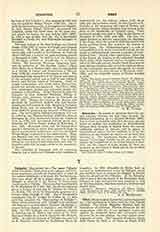

Tallaght, MONASTERY OF.—The name Tallaght (Irish Tamlachta), derived from tam, plague, and lecht, stone monument, records the burial place of some of the earliest inhabitants of Ireland, the Parthalonians, who were swept off by a plague about A.M. 2600. Tallaght is situated in the barony of Uppercross, 5 miles south of Dublin. The monastery was founded by St. Maelruain (d. July 7, 792), the site having been given in honor of God and St. Michael by Cellach (d. July 18, 771) of the Ui Donnchada, grandson of a Leinster king, Donogh (d. 726). One of Maelruain’s companions was St. Aengus the Culdee (q.v.), who with him compiled the “Martyrology of Tallaght”. Other saints associated with Tallaght were Airennan (February 10), second abbot; Eochaid (January 28), second bishop; Joseph (January 5); and Dichull (d. 889). In 1179 Tallaght, with its subsidiary chapels of Killohan and St. Bride’s, was united to the Archdiocese of Dublin by a Bull of Alexander III (April 20, 1179). In 1223 the deanery of Tallaght was annexed to St. Patrick’s Cathedral by Archbishop Henry de Loundres. In 1324 Alexander de Bicker built or restored an archiepiscopal manor at Tallaght, which was fortified later to protect the English in Dublin from the attacks of the O’Byrnes. At the Reformation it passed into the hands of the Protestant Archbishops; its ruins and grounds were acquired in 1842 by the Dominicans, who have erected a novitiate and church there.
A. A. MACERLEAN

